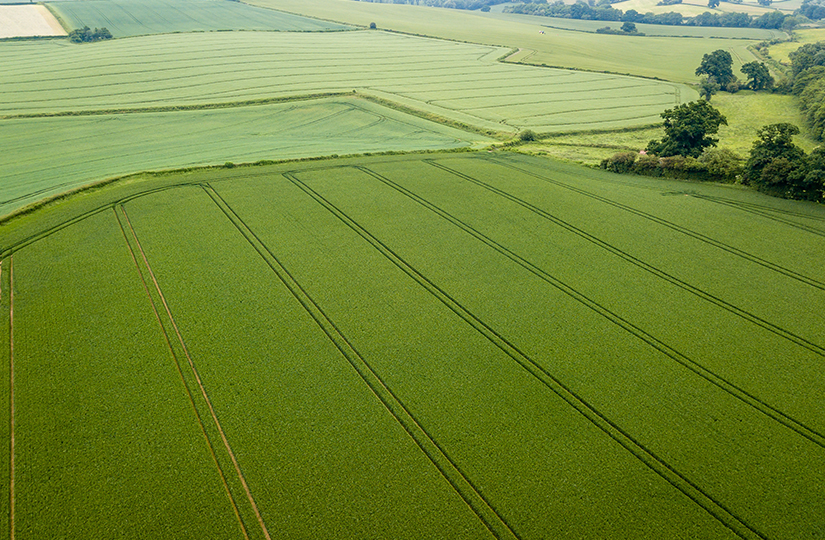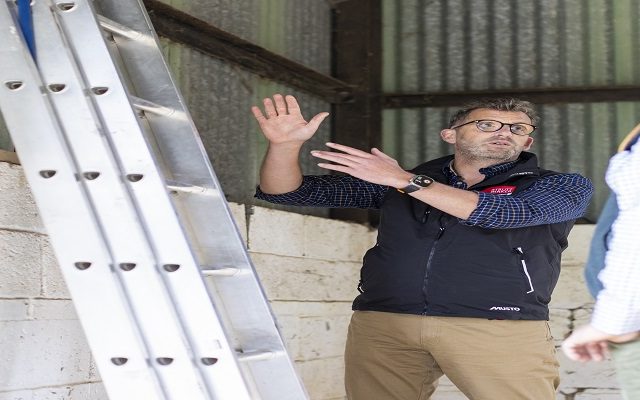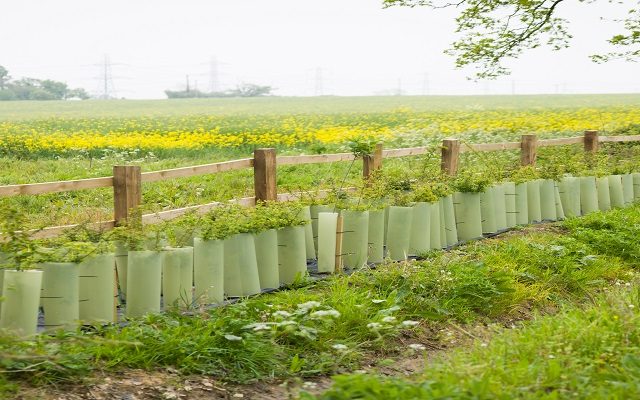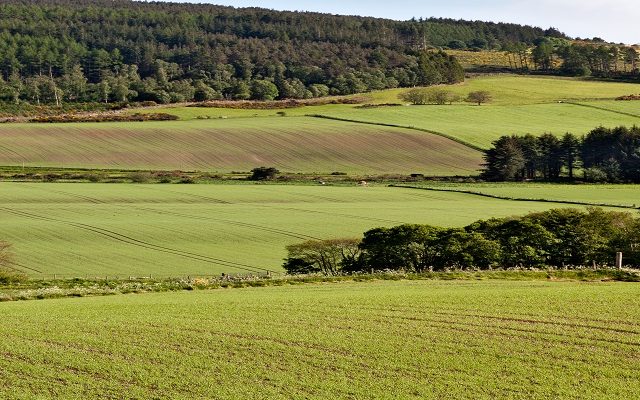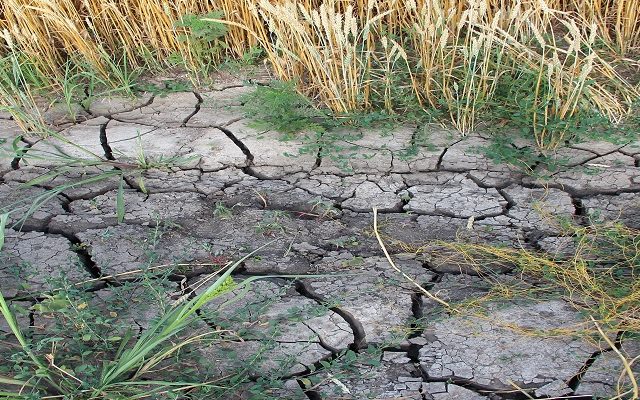Regional Round-up of Harvest Prospects and Trends for Cropping in 2021
Strutt & Parker’s farming consultants offer a regional insight into crop prospects for harvest 2020 and how growers are approaching the 2021 cropping season.
Common themes and key messages:
- Caution about selling too much grain forward, because of pessimistic outlook for yields.
- Growers should see significant savings in fungicide spend because of the dry 2020 conditions, which coupled with better prices, will help.
- Growers generally looking to drill earlier this year, despite blackgrass and BYVD risks.
- Wheat likely to form large part of many rotations – necessary for income and stability and because there is seed on farm that needs using up.
- Whether to include OSR in the rotation will be localised decision, based on conditions at the time.
Harriet Ross – Scotland
It has been an extraordinary growing season, so far, here in Scotland. After some on the wettest winter months seen on record, April in Scotland was the third driest on record. The contrast with the winter months could hardly be starker.
Crops that sat doing nothing through April, inevitably put on growth spurts and raced through the stages in May. The variation in crop advancement is reducing but the difference in yield potential is very striking.
Harvest 2020 yields expectations are looking extremely varied throughout Scotland. Here in the north east we have had an almost perfect growing season and missed most of the extreme weather, so crops are looking well and yields should be good. However, further south crops are now drought-stressed at the crucial grain filling growth stage. Yields are expected to be significantly less in these regions. The good news is prices have been steadily increasing over the past month, this should help with the generally poorer yields.
2021 cropping will generally remain unchanged, but completely depends on the weather we get after harvest. In southern Scotland, growers might try and get crops drilled earlier than last year. This will increase the chance to get plants well established before any wet weather hits. We are also lucky to still be able to grow viable oilseed rape crops, although more insect issues have been seen this season. Some establishment methods need to be reconsidered for next season. Although the weather played a part, some combinations of kit have really not worked too well in the circumstances and whatever else, we need to be able to make a decent job in a wide range of conditions.
Growers are already busy buying inputs for the coming season. Fuel and fertiliser being two of the main inputs that are a very good price at the moment. Businesses are also looking into the future and some are setting up grain contract options for the next couple of years. With a lot of uncertainty around what will happen with trade deals at the end of the Brexit transition year, growers are wanting to have as much certainty as possible that there will be an end market for their products.
Alice Montrose – Oxfordshire
Here in the centre of the country we are lucky to have a large mixture of soil types which allows us to grow a wide range of crops, spread planting and harvest windows and also diffuse risk in terms of crop performance. On the flip side, looking after this wide range of crops also means we experience a vast array of problems!
On the lighter land, the winter cereals we managed to drill in the very wet autumn came out of the winter well and looked to have real potential. However, the wet soil conditions prevented the crops from establishing adequate root systems to tolerate this drought. Therefore, both the winter wheat and winter barley is turning very quickly. This is not so much of an issue in the barley which is well into the grain-filling stage but more of an issue in the wheats where the ears are only just beginning to flower. However, with rain on the horizon hopefully it is not too late! We will be adding micronutrients in with the ear washes to help crops hold on as long as possible – magnesium and boron to help chlorophyll production continue, copper to help prevent blind grain sights and zinc to prevent ear abortion.
It is a similar story with the spring crops on the heavy land where very little winter crops were planted. If seedbeds were not prepared well in the autumn or if crops were drilled slightly too early, establishment was severely affected and therefore the already stressed crops are struggling in the dry weather. Where crops were drilled into good seedbeds, the crops are looking fit and growing well.
On the plus side, the low rainfall has kept the both the spring and winter crops really quite clean in terms of disease which has allowed us to reduce spend on fungicide programmes quite significantly and protect margins where yields are expected to be lower this year.
As well as trying to minimise spend as far as possible due to the reduced yield expectations, grain sales strategy has also been affected. Growers are cautious to commit too heavily, despite the attractive prices available at the moment. In a few situations, farmers have kept 2019 crops back to capitalise on the November new crop prices. As a rough rule on wheat, farmers are around 40% sold at a predicted yield around 60% of what they would normally work on.
Looking forward, I think it will be difficult to not let the problems of this year affect our better judgement – farmers will be nervous to continue the hard work they have started in terms of delayed drilling for blackgrass control in fear of getting caught out by the rain. It is important to remember that no two seasons are the same. I am also slightly nervous that growers who have had significant financial losses from growing OSR and therefore plan to not grow it this year, will get tempted to plant again if the drought allows an early harvest and we get some wet days in August. We must bear in mind that even crops that made it to stem extension and even early flower were lost to flea beetle larvae this spring.
On the positive side, there is lots of seed and chemical stock on farm left over from Autumn 2019 that is ready to be used and will therefore help cashflow over the next few months. Also, fertiliser prices are currently very attractive which all helps us to look onwards and upwards to next year.
Generally, I expect the first wheat acreage to be up across my clients farms by around 30% next year; this is due to the fact that there are lot of opportunities in the rotation for first wheats with a large spring crop and legume area this harvest; but also a tactic to recoup some of the expected financial losses from an unprofitable rotation this year. Lots of growers are having success this spring with growing spring linseed and spring beans in this region, so I also expect a greater diversity in spring cropping in addition to the conventional spring barley option going forward. This is also a great opportunity to reapportion some ‘break crop area’ away from winter OSR.
Cameron Knee – North & North East England
Following one of the wettest winters on record in the North East, typically a fairly dry region, good-looking and fit winter crops are few and far between. Establishment was the real issue, with much of the winter drilling delayed or followed by a prolonged deluge of rain leaving seed rotting in the ground.
Those early sown wheat and barley crops have fared relatively well and will likely produce some average yields however, later drilled crops established from October onwards tend to be patchy with low tiller numbers contributing to a likely poor yield come harvest.
Although we have seen an increase in the growing area of spring crops this year, the region is historically a big grower of spring barley, therefore the larger increase in spring crops has been seen in the spring oat market. It is these spring crops that seem to have struggled the most with these recent bone-dry weather conditions, with poor establishment and tillering paired with a snail’s pace growth likely contributing to some subpar yields across the board. I have however seen some excellent spring barley crops this past month and the challenge now will be keeping them green for harvest.
Conservative has been the approach for grain marketing, with growers and myself alike hesitant to forward sell much of the grain without it being in the shed, with others relying more heavily on pool marketing.
Around 70% of growers have made the most of the drop in early season fertiliser prices and where I have the space to store it over the summer, early delivery has been organised. Leftover seed from last autumn is driving some cropping decisions for the following season and it is likely that wheat will form a large part of many rotations following the low drilling percentage for Harvest 2020.
Oilseed rape continues to become less popular in Yorkshire and County Durham, with flea beetle pressure posing too high a risk to this break crop at establishment. Northumberland and the Scottish Borders is still yet to see large scale flea beetle damage therefore I, like others in the region have chosen to still include a large hectarage of this breakcrop in rotations for 2021 to help mitigate the anticipated fall in wheat prices following a likely increase in next year’s wheat plantings.
Will Davies – East Midlands
Oilseed rape has had mixed fortunes in the region with dry weather at the back end of drilling causing many crops to fail to establish. CSFB larvae has caused issues in some crops for the first time causing many growers to understand the pain of their eastern counterparts.
Many autumn cereals did not get drilled and those that did were left in varying states over winter. Despite some patchy emergence and a struggle with yellow rust throughout the spring, most had pulled themselves into respectability. Up until three weeks ago, optimism was high given the year to date, but lighter land wheat and barley and second cereals are now struggling. Late frosts were the icing on the cake for crops at ear emergence. Yield predictions with clients are therefore realistic and will focus the mind on crop marketing.
I would estimate that the split between winter and spring crop this year is 30:70 in favour of spring crops of which barley and wheat make up the majority. Land that was moved a lot this spring and later drilled April crops are not faring as well as crops drilled straight into stale seedbeds which at present seem to be faring well and finding moisture. With the dry weather, spring cereal disease control has been achieved with low cost options and savings made on agchem. This will almost offset the cost of the spring wheat seed.
With people wanting to push 2020 from their mind, our focus has turned somewhat to 2021 and minimising the impact of 2020 on future years. Poor grassweed control this year has meant patches of blackgrass have been sprayed off. One thing that I can see presenting a difficulty in the autumn of 2020 is delayed drilling for blackgrass control. Autumn 2019 will be fresh in people’s mind but we must be vigilante and remember why we are taking this precaution.
A decision on growing OSR has been made, that decision is to “maybe plant it, maybe not”, moisture will be needed, fields will be chosen carefully and areas will certainly be reduced. I am having discussions with growers about alternative cropping options and there is no one crop that can replace OSR, it might be pulses, linseed, beet, forage or even a stewardship scheme with rotational options.
It is important to look at the profitability and robustness of the rotation as a whole rather than weighing up crop for crop and crop choice will be chosen on a farm-by-farm basis to suit existing cropping, farming system and business objectives.
Dan Matthews – West Midlands
In the West, most growers have at best poorer than average winter cereals due to late or sub-optimal establishment, combined with an exceptionally dry spring, which has led to a pessimistic outlook for yields this harvest.
The decision to delay drilling of winter cereals due to the withdrawal of neonicotinoid seed dressings has had the biggest impact on the area of winter cereal establishment. Last autumn later drilling was hoped to lower the risk of BYDV through transmission from infected aphids. When the weather broke, very little of the planned winter cereals were drilled after the end of September. To avoid that situation this autumn, growers are prepared to take the risk and begin drilling a lot earlier, planning to spray to control aphids instead.
Until last autumn, cabbage stem flea beetle in oilseed rape was not been considered to be endemic in this region. However significant levels have been observed throughout this growing season and has made growers question if the crop has a future.
There is split opinion amongst growers as to whether the crop should still be included in the rotation and with market prices relatively static it will make that decision to reduce or stop growing oilseed rape altogether so much easier.
With wheat prices currently buoyant and if they have few grassweed problems, growers are considering increasing the quantity of second wheat for the coming season. But deciding on a sustainable and profitable break crop is still going to be a challenge.
After recent dry conditions growing more spring pulses does not look very attractive. The abrupt switch from a record wet winter to a record dry spring this year held lots of promise for successful spring cropping. However extended drought during the second half of May has tested any spring crops that were drilled late or where establishment was compromised, with most of them very little or no rainfall since drilling. This season has seen a lot of spring barley grown locally and yields are likely to be variable depending on establishment, soil type and rainfall.
Going forward it is giving growers a headache returning to a sensible and sustainable rotation. Most growers are hoping that recent improved wheat prices come harvest will help to support margins where yields have already been compromised.
Zoe Brooks – Norfolk
In Norfolk, the dry weather has kept septoria pressures low to date. Rust has been visible in a lot of crops this season, with the warmer conditions increasing the risk of brown rust. Orange blossom midge populations are increasing in the East, but with many crops flowering few crops should require an insecticide.
The oilseed rape that has survived to pod set is variable and we are seeing a number of growers questioning its future as a breakcrop, or persisting with the crop but on a smaller area. Sugar beet has suffered in the dry conditions. With variable plant populations and size, weed control has been compromised, necessitating a hoe. Aphid populations have soared this season, the prolonged warm weather has encouraged aphid movement, slowed the beet development and reduced the persistence of the insecticides.
Turning to harvest 2021, we are seeing the majority of growers looking to establish an increased area of wheat. Many will try to start drilling winter cereals a week or so earlier to mitigate the risk of weather restricting the drilling window. Those who are persisting with OSR will try and establish crops in early August with around the 12th being seen as the cut-off date. Some growers are cautious about committing too much of the Harvest 2020 crop due to yield concerns, whilst other growers are marketing crops forward for Harvest 2021 to take advantage of the current uplift in prices.
Will Cobley – Cambridgeshire
Wheat crops drilled in the autumn look to be holding up currently, but will be dependent on significant June/July rainfall assisting grain fill. Pre-emergence herbicides have worked effectively which can be clearly seen in any spray misses, and any areas with a significant blackgrass population have now been sprayed off to prevent any seed return. Spring crops and those on lighter land on the other hand have noticeably started to show the effects of the rainfall deficit.
Thoughts are now turning to the 2021 cropping season and discussions are starting to be had about the rotation going forward. If one thing has been learnt from this season it is to be flexible in our approach as you never know what is around the corner.
The normal sticking point of any cropping discussion is how much OSR will feature if any at all, with many growers feeling that the unpredictability of OSR since the loss of neonicotinoid seed dressings has become too much of a headache. However, with what looks set to be an early harvest, if fields are cleared and weather conditions are favourable for establishment then this may change.
Those not growing OSR are looking to increase their area of spring/winter beans and alternatives such as the two-year legume fallow within the countryside stewardship scheme.
The season to date has been challenging, and careful consideration should be made to a number of factors going forwards. Firstly, soil health after a particularly wet autumn and droughty spring. Restorative cultivations shouldn’t be overlooked, particularly if significant damage has been done e.g. harvesting compaction after sugar beet. Finally, growers shouldn’t be afraid to hit the reset button on rotation – the autumn would be the time to do it.
George Hoyes – Hertfordshire
Despite the lack of rain, the autumn drilled crops in Hertfordshire have held on surprisingly well. Although we are starting to see the crop stress levels reach permanent wilting point on some of the gravellier patches. The different soil types are very recognisable. In these areas, the flag leaf is beginning to curl up and this does not bode well as the plant enters the grain filling growth stage. All of this is likely to lead to narrow grains and the knock-on effect to losing out on the potentially big milling premium that could be available this year due to lack of supply.
Some benefits with the lack of rain has been to trim back inputs costs accordingly. For example, fungicide spend on some farms has been half of what we had budgeted.
Within the area we had farms ranging from 0% autumn-drilled because of the initial rainfall right through to 115%, i.e. we drilled more winter wheat than originally planned to capitalise on the market prospects.
All of my clients have forward bought their fertiliser, with AN at sub £200/t and Nov 21 futures at £150/t feed base price, the ratio between fertiliser and final price is that not seen since 2013. In addition to this we have several farms who have already sold 15% of their anticipated 2021 wheat harvest to lock in a hopefully profitable price although there is still a long time between now and then and who knows what will happen weather wise.
Due to the horrors of the CSFB, there is very little OSR planned. However, everyone I have spoken to has said if the weather conditions come right (warm and wet), then they will try and get some established. If this is the case, they will be utilising a method that involves very little upfront cost. Home-saving seed where possible and not applying any inputs until a viable crop is there.
There is a very serious risk of everyone drilling their wheat at the start of September and us having to face the repercussions of not utilising the key blackgrass cultural control method of delayed drilling. The worst thing farmers do is change practices to suit the previous year’s weather.
Leo Page – Berkshire
The weather we have had recently would usually be headline news, and the threat to cropping yields is as great or greater than in the drought of 2018. Obviously there is something more important going on, but who knows?
Regardless of what the weather does now, we have noticed much less potential in the cereal crops as tillering and ear/grain counts are lower than usual, leading to predictions of a much reduced bushel weight. Possibly a yield reduction of up to 50% from last year, if the rain doesn’t arrive in time – or a fall of 2 to 3t/ha on the winter wheats if the rain is generous. The one crop which does seem to be doing well is the winter barley, although with the difficult drilling period in the autumn there isn’t much of this around.
There is variation, of course, in optimism depending on soil type. Up on the chalky hills the moisture is still just about hanging on, while down by the Thames and Kennet rivers the sandy-shallow soil farmers are already having problems with flag leaves curling up on the cereals. Ear emergence has been alarmingly quick, with a little as 10 days from the flag leaf emerging to the ear emerging on the drier, more stunted, crops (straw production is bound to be reduced from last year).
In terms of disease pressure on the cereals, this year ought to be one where savings are made on the fungicide spend, with only a few yellow rust issues and these are sporadic at worst.
The picture with OSR is also varied, with some cause for optimism where people have found success with some work-arounds with drilling times and practices to mitigate the flea beetle problem. Some farmers are trialling very early drilling dates for this crop (as early as late July), and others have decided to try direct drilling after chicken muck has been spread as a deterrent to flea beetle. Other good news is some grain breeders have been taking some of the risk for drilling OSR, with rebates for failed OSR on the Breeder’s Royalties. Good news aside, the area of OSR grown in this area continues to slide as people look at more reliable alternatives, including even the “black sheep” of the crop rotation family – linseed. A few people have even dabbled with spring OSR this year and many have had their fingers burnt, the options for weed control being too restrictive in this crop.
In terms of risk mitigation, cropping rotations are generally getting longer (but farmers are finding ways to maintain the winter wheat area). The thoughts of some farmers have turned to a greater focus on non-combinable crops such as hay and silage or even horticultural options on the sandier soils. Meanwhile there are also efforts to move ahead ambitiously with regenerative practices such as cover cropping and a greater use of direct drilling.
For 2021, a lot hangs on where we stand with the three-crop rule which was put aside this year by Defra minister George Eustice due to the bad weather. There has been discussion within Defra that it doesn’t seem to make sense here in the UK in its current iteration, and as Defra are looking to simplify BPS there is hope that the three-crop rule will be given the guillotine. People are holding their breath on planning cropping for 2021 for this reason. People will be aiming to keep a large area of winter wheat in rotation as per usual, but there will be a yet smaller area of OSR. As winter barley seems to have been reliable this year it might be suggested that it will be popular again
The 2020 harvest may end up being notable for all the wrong reasons, but there is a general feeling that these climatic and pest issues are here to stay and we need to adapt and move on.
Harriet Cartwright – Hampshire, Wiltshire and Dorset
Spring drilling went in well, but the subsequent serious lack of rainfall has spread concern for the spring crops, Countryside Stewardship plots and game covers. This seems to be more prevalent the further west you head, although definitely a problem across the counties.
Growers are taking a step back and looking at their current cropping rotation amid dropping confidence in the viability of growing oilseed rape. Research into alternative break crops, is underway, with oats, beans peas and linseed at the forefront of a lot of our clients’ minds.
Early research in to contracts available in also underway, as well as the use of farm benchmarking to compare gross margins. Alternative cropping such as growing crops for AD plants and incorporating grass and maize into the rotation to provide for silage to neighbouring livestock farms is also being considered.
Trying to market grain for a rain hungry crop has been challenging. Prices do generally seem firm in comparison to other years.
The decision-making process for reinvesting in machinery or farm buildings has another layer added when considering whether to do it now whilst the BPS payments are still coming in their fullest form, or whether to delay until we know more about what funding that might be available under the Environmental Land Management Scheme (ELMS).
Watch the latest Scottish farming update from our presentation at Cereals LIVE 2020
If you would like to discuss any aspect of crop management and agronomy, please contact a member of the Farming Department.
